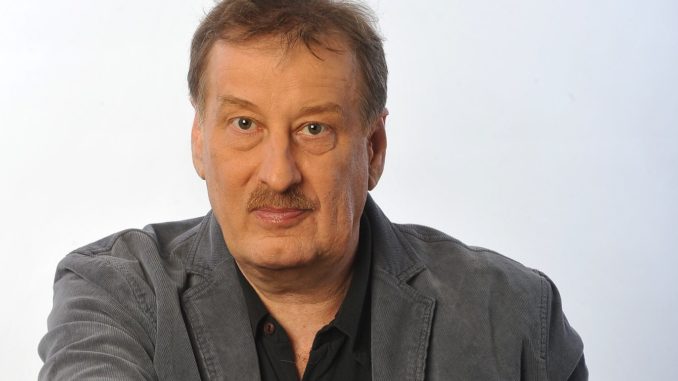
Director of the BUDAPEST ENSEMBLE and
Creator of “Csárdás! – The Tango of the East”
by Kálmán Dreisziger
Zoltán Zsuráfszki is an intense man. He has a classical dancer’s build – lean, muscular, erect – but there is a hint of earthiness and power, that at close quarters can be almost disturbing. The face is craggy; homely one moment, handsome the next. His red hair and a strong, beak-like nose is an inheritance from his Goral-Polish ancestors. He brings passion to his stage roles, creating larger that life peasants, outlaws or mythical characters through the power of his dance.
Q: What is your goal in life?
> There were three great schools of folkdance in Europe: the Russian (Moiseyev) school, the Bulgarian (Balkan) and Flamenco. Irish or Gaelic dancing has only most recently won acclaim. I want to make the Hungarian School the newest great power.
Q: What makes you think you can achieve this task?
> First, because the eyes of the world are already turning towards Hungarian folkdance. In Europe, Japan, North America and Australia, Hungarian dances are increasingly popular. Second, because the improvisational nature of Hungarian dance not only lets the audience access a tradition, but also allows dancers to express their own individuality. Let me digress for a moment. It is important to understand that for me “Hungarian” is simply a code word for Central European or rather Carpathian Basin dances, including Slovak, Goral, Transylvanian-Romanian, Gypsy. Folkdance is far more a regional than a national phenomenon.
Q: What is so special about these dance traditions?
> Individuality and power. These dances were born of – or rather were greatly influenced by – the early Renaissance, which brought the concept of individualism to all the arts, including dance. This is the historical watershed when the dances of Europe changed from circle and line formations to improvised individual and couple dances. Later, when Western European fashion changed again to set-pattern contra dances, Carpathian Basin dances retained their individual, improvised quality. Their power, of course, comes from a much more ancient source: war and weapons dances which have been part of these cultures for thousands of years.
Q: How does the Csárdás fit into this?
> The Csárdás is the inheritor of all these traditions. Like a Tango, it can be an improvised couple dance which can suddenly become alluring love play. The partners can dance together or apart, or it can be a virtuoso solo for the man. The Csárdás allows the partners to choose how to relate to each other in a great number of ways. And the spatial, rhythmic and dynamic variations are virtually limitless. It is a truly multi-layered dance. In fact, it is the very complexity that has been making the Csárdás inaccessible for audiences. Until relatively recently, for example, there were no professional dancers who could improvise this dance style. Now, any one of my dancers could join a village wedding – even in Transylvania, where dances are the most complex – and fit right in.
Q: What brought about this change?
> When the world was going through the great cultural upheaval of the sixties and seventies and the “folk” ideal became important – even in the USA – Hungary went through a unique folk revival. Thousands of urban young people, some who had never danced before, began to learn traditional dancing. TANCHAZ (dance house) clubs were formed, where Hungarian, Transylvanian and Balkan dances were done to authentic live music exactly as they would be at a Saturday night village dance. Soon, some of these amateur dancers could dance better than the country’s professionals.
I was a part of the vanguard of the young generation which brought this phenomenon to the stage. We’d dance all day during the rehearsals of the State Folk Ensemble and at night we’d go dancing at a TANCHAZ – and really dance. It was just a matter of time before the fuse we lit exploded on stage. Now, Hungarian performers, like my students, are ready to set the world on fire with their amazing improvisational ability.
Q: What makes you different from other dancers and artistic directors like Igor Moiseyev, Antonio Gades or Michael Flatley?
> My attitude to folklore. I don’t look at traditional dance merely as raw material for personal stage success. I respect it totally. I believe that respecting folk traditions can offer a key to mutual respect among the nations of Central Europe for example, making the Bosnia scenario less likely. And, in a broader sense, it can also fill the void of ‘rootlessness’ prevalent in world society today.
